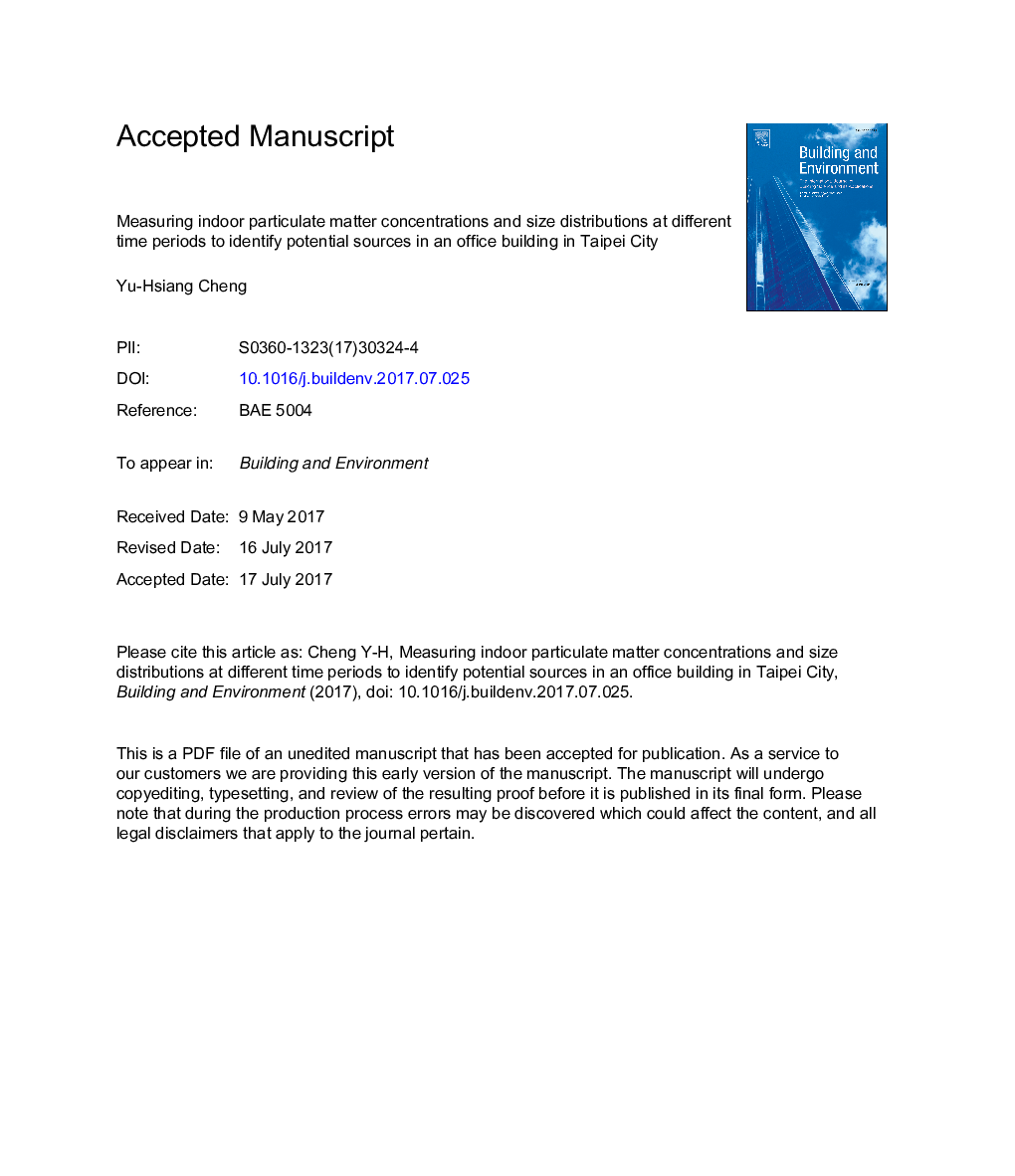| Article ID | Journal | Published Year | Pages | File Type |
|---|---|---|---|---|
| 4917272 | Building and Environment | 2017 | 37 Pages |
Abstract
In this study, indoor PM concentrations and size distributions were measured at different time periods to identify the sources of indoor PM in an office building. The measurement results indicate that indoor PM concentration was affected by outdoor air quality conditions, building ventilation system operations, and indoor activities. The results demonstrated that the indoor PM10 concentration was significantly affected by the outdoor air quality conditions when the ventilation system was turned on. However, the outdoor and indoor PM10 concentrations were less correlated when the ventilation system was turned off. Moreover, fine PM was the major component of the indoor PM in the air supply device. Additionally, the indoor particle mass size distributions exhibited a triple-mode pattern on working days. The dominant mode was at approximately 0.33 μm, and the other two modes were at 2-4 μm and 12-14 μm. Specifically, an extremely coarse mode at 12-14 μm could be observed during working hours, demonstrating that these coarse particles in the indoor environment were caused by indoor activities during working hours. Moreover, the indoor particle mass size distributions on the holidays exhibited a stable double-mode pattern, suggesting that the coarse particles in the indoor air completely vanished due to sedimentation because of less indoor activities on the holidays.
Related Topics
Physical Sciences and Engineering
Energy
Renewable Energy, Sustainability and the Environment
Authors
Yu-Hsiang Cheng,
